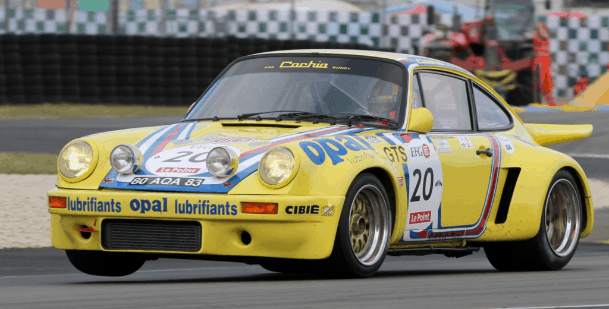Year: 1974 | Generation: Carrera RS
Engine: Flat-6 | Power: 280 bhp | 0 – 60 mph: 5.6s | Top Speed: 178 mph
Introduced in 1973, the RSR was a factory-built racing car based on the 911 chassis. These were not converted street cars, but rather purpose-built competition models designed and built from the ground up for serious racing use. In 1974 the factory made significant changes to the car including a new 3.0 liter engine, wider wheels with center lock hubs and improved aerodynamics. The result was a car that would dominate the GT category and challenge for overall wins around the world.
The RSR dominated international GT racing in 1974 and 1975, it blew the competition out of the water in the Trans Am, IMSA, and the FIA World Championship racing series – cementing its place in Porsche history as one of the most important factory race cars ever built by the Stuttgart-based marque.
Porsche built the Carrera RSR on the frame of the road-spec 911 for homologation purposes, much of the body was replaced with fiberglass to save weight and the cockpit held a single seat on the left-hand side. The widened wheel arches held racing slicks with a 10 inch wide tire fitted in front and a hefty 14 inch tire at the rear, the engine utilized a twin-plug ignition system and a capacity of 2,992cc.
The engine block was cast from aluminum to keep weight down and a large dry sump oil tank fed fluid to a front bumper mounted oil cooler, allowing the Carrera RSR to remain competitive during endurance racing events. For 1974 the compression ratio was increased from 9.8:1 to 10.3:1 which resulted in 330hp reaching the rear wheels at 8,000rpm.
With a kerb weight of 900 kilograms (1,984lbs) the Carrera RSR was lightning fast, with its predictable handling and almost bullet-proof reliability it’s undeniable that it forced other GT racing marques to up their game significantly in order to stay competitive.


